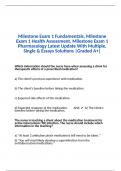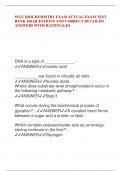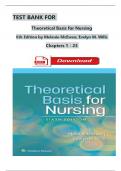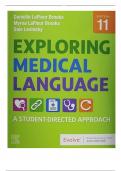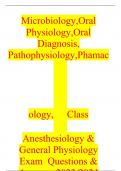Tentamen (uitwerkingen)
TEST BANK For-Gould's Pathophysiology for the Health Professions 7th Edition by Karin C. VanMeter; Robert J Hubert | complete / ultimate Guide, Latest Update A+
- Vak
- Instelling
- Boek
TEST BANK For-Gould's Pathophysiology for the Health Professions 7th Edition by Karin C. VanMeter; Robert J Hubert | complete / ultimate Guide, Latest Update A+TEST BANK For-Gould's Pathophysiology for the Health Professions 7th Edition by Karin C. VanMeter; Robert J Hubert | complete / ultimate Gu...
[Meer zien]





